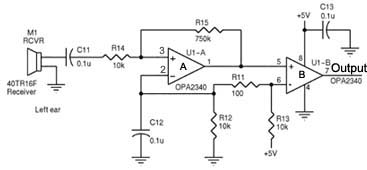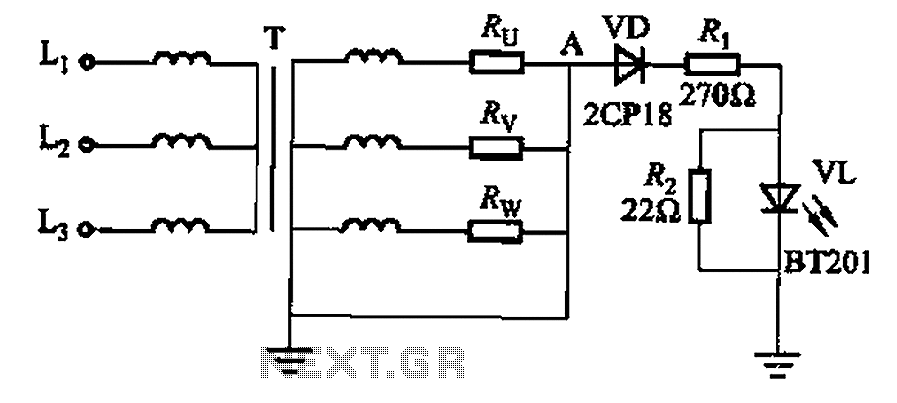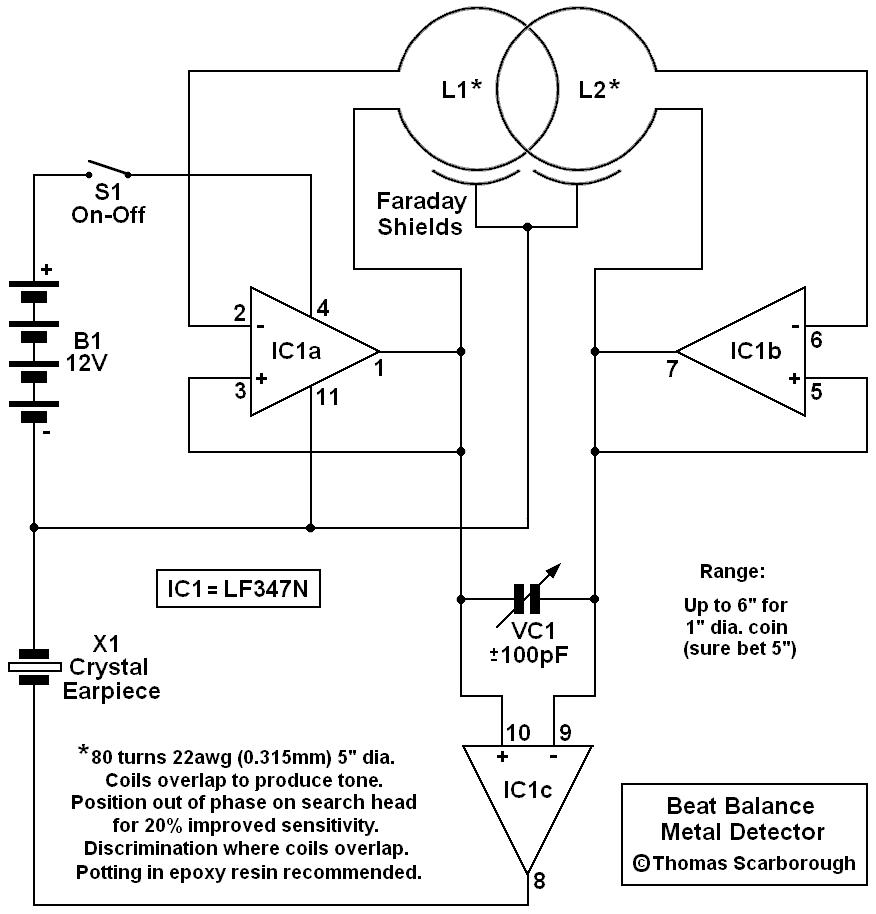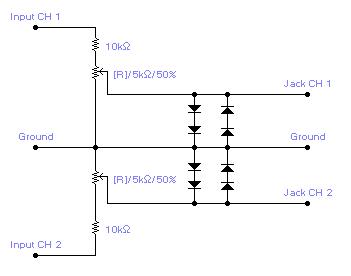
Thyristor controlled motor reversing circuit a timer
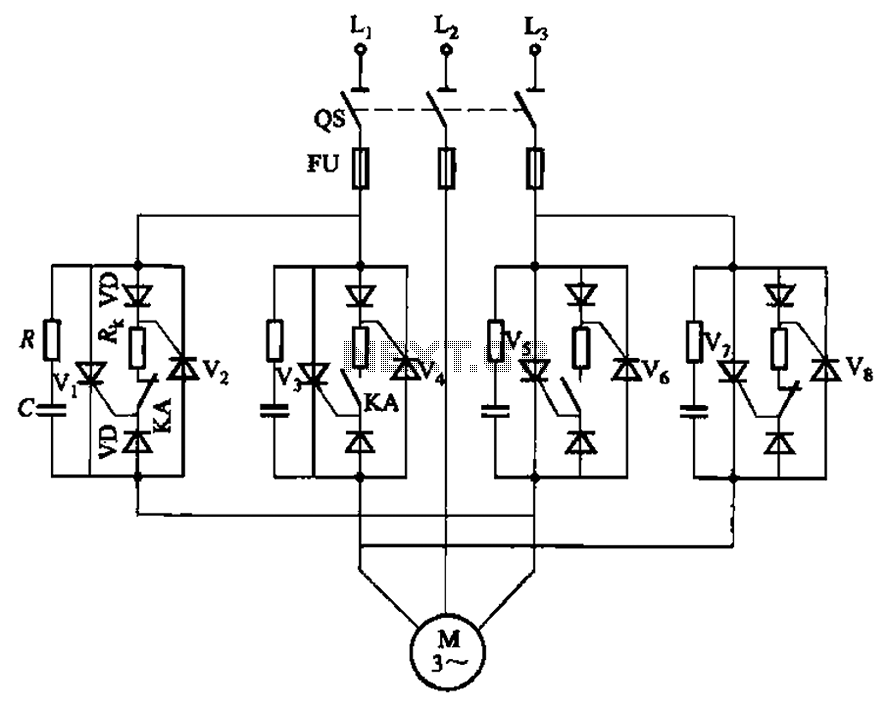
The circuit depicted in Figure 3-69 is designed for applications requiring frequent timing control for motor reversing operations. In this configuration, thyristors V1, V2, V7, and V5 are utilized for positive control of rotation, while thyristors V3, V4, and V6 are employed for inversion control. The forward and reverse running times of the motor are regulated by the use of single-junction transistor VT1 and related circuit configurations, along with the VT2 delay circuit. Resistors R and capacitors C are implemented for thyristor protection. The adjustable potentiometers RPi and RP2 allow for modification of the motor's forward and reverse running times, respectively.
The circuit operates by utilizing a combination of thyristors and transistors to achieve precise control over the motor's operation. The thyristors V1, V2, V7, and V5 facilitate the positive rotation of the motor, enabling it to run in a forward direction. Conversely, thyristors V3, V4, and V6 manage the inversion control, allowing the motor to reverse its direction.
The role of transistor VT1 is critical as it acts as a switch that extends the timing for the motor's forward and reverse operations. This switching action is complemented by the delay circuit involving VT2, which further refines the timing control by introducing a delay before the motor changes direction. The resistors R and capacitors C serve as protective components, ensuring that the thyristors operate within safe limits and preventing potential damage due to overcurrent conditions.
Potentiometers RPi and RP2 provide an interface for users to adjust the timing settings. By varying the resistance in these potentiometers, the duration for which the motor runs in either direction can be modified, allowing for flexibility in applications where different timing requirements are necessary. This feature is particularly advantageous in automation systems where precise control over motor operations is essential for optimal performance.
Overall, this circuit exemplifies an effective design for controlling motor operations with an emphasis on timing and directional control, making it suitable for various industrial and automation applications. Circuit shown in Figure 3-69. It applies to require frequent timing control motor reversing operation of the occasion. Drawing, thyristor Vl, V2 and V7, vs used as a positive c ontrol rotation, V3, V4 and V5, V6 used inversion control; motor forward running and reverse running time, respectively, by the extension of single-junction transistor VTi and the like of the circuit configuration and the like by the VTz delay circuit to control; the resistor R and the capacitor C is used for the thyristor protection. Adjust potentiometer RPi and RPz, can change the motor running forward and reverse running time respectively.
The circuit operates by utilizing a combination of thyristors and transistors to achieve precise control over the motor's operation. The thyristors V1, V2, V7, and V5 facilitate the positive rotation of the motor, enabling it to run in a forward direction. Conversely, thyristors V3, V4, and V6 manage the inversion control, allowing the motor to reverse its direction.
The role of transistor VT1 is critical as it acts as a switch that extends the timing for the motor's forward and reverse operations. This switching action is complemented by the delay circuit involving VT2, which further refines the timing control by introducing a delay before the motor changes direction. The resistors R and capacitors C serve as protective components, ensuring that the thyristors operate within safe limits and preventing potential damage due to overcurrent conditions.
Potentiometers RPi and RP2 provide an interface for users to adjust the timing settings. By varying the resistance in these potentiometers, the duration for which the motor runs in either direction can be modified, allowing for flexibility in applications where different timing requirements are necessary. This feature is particularly advantageous in automation systems where precise control over motor operations is essential for optimal performance.
Overall, this circuit exemplifies an effective design for controlling motor operations with an emphasis on timing and directional control, making it suitable for various industrial and automation applications. Circuit shown in Figure 3-69. It applies to require frequent timing control motor reversing operation of the occasion. Drawing, thyristor Vl, V2 and V7, vs used as a positive c ontrol rotation, V3, V4 and V5, V6 used inversion control; motor forward running and reverse running time, respectively, by the extension of single-junction transistor VTi and the like of the circuit configuration and the like by the VTz delay circuit to control; the resistor R and the capacitor C is used for the thyristor protection. Adjust potentiometer RPi and RPz, can change the motor running forward and reverse running time respectively.
